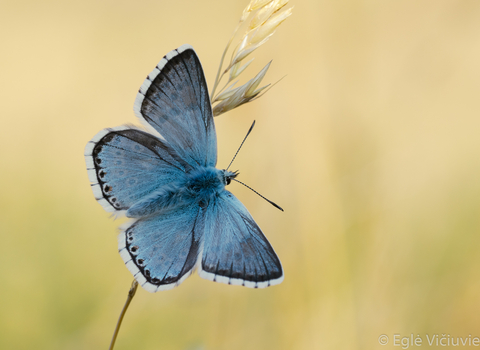The exhibition at the Museum of Zoology is based around the work of Leonard Jenyns, a naturalist and friend of Charles Darwin, who lived in Cambridgeshire during the 19th century: Jenyns spent much of his time recording local wildlife in detailed notebooks held at the Museum.
The exhibition tells the story of 13 local butterfly species over the last 200 years, and the research and conservation currently being undertaken to protect them, showcasing historical butterfly specimens, offering visitors a chance to see rare butterflies usually held behind the scenes in the Museum storerooms, alongside accounts of how these species are faring in modern Cambridgeshire.
The Butterflies Through Time project is providing information to help guide habitat restoration work on nature reserves, in collaboration with BCN, at nature reserves such as the Great Fen. One of the butterflies featured in the exhibition is the swallowtail butterfly, once plentiful in the Fens, as Leonard Jenyns’ notebooks highlight it being common in Cambridgeshire: ‘Found in the greatest plenty, throughout the Fens between Ely & Cambridge’.
The swallowtail became locally extinct in Cambridgeshire the 1950s due to drainage of fenland habitat for farmland, and the butterfly’s disappearance mirrors changes to many wetland species that were previously found in Cambridgeshire. Jenyns’ notebooks provide a vital insight into which species were found in Cambridgeshire 200 years ago, and allow comparison with wildlife today. The large copper also, now extinct in the UK was a 19th century victim of land/habitat drainage.
The Trust's Dr Gwen Hitchcock said: “It’s really exciting to see how past records can help with the current, and future, conservation of these beautiful and important species. It highlights the importance of biological recording and how, by working together, we can ensure a future for our wildlife.” The Trust and department of zoology are collaborating on a project in Bedfordshire looking at ways of mitigating climate change in chalk grassland species, Banking on Butterflies, see foot of page.
Dr Ed Turner, Curator of Insects at the Museum of Zoology commented: “Butterflies are among the most beautiful and popular groups of animals. This exhibition highlights the wonderful variety of species found locally, but also their fragility and need for conservation.”
Another goal of Butterflies Through Time is to engage local school children with butterflies and their conservation, and the exhibition includes artwork made by children from local schools.
The exhibition runs until 18 September.






